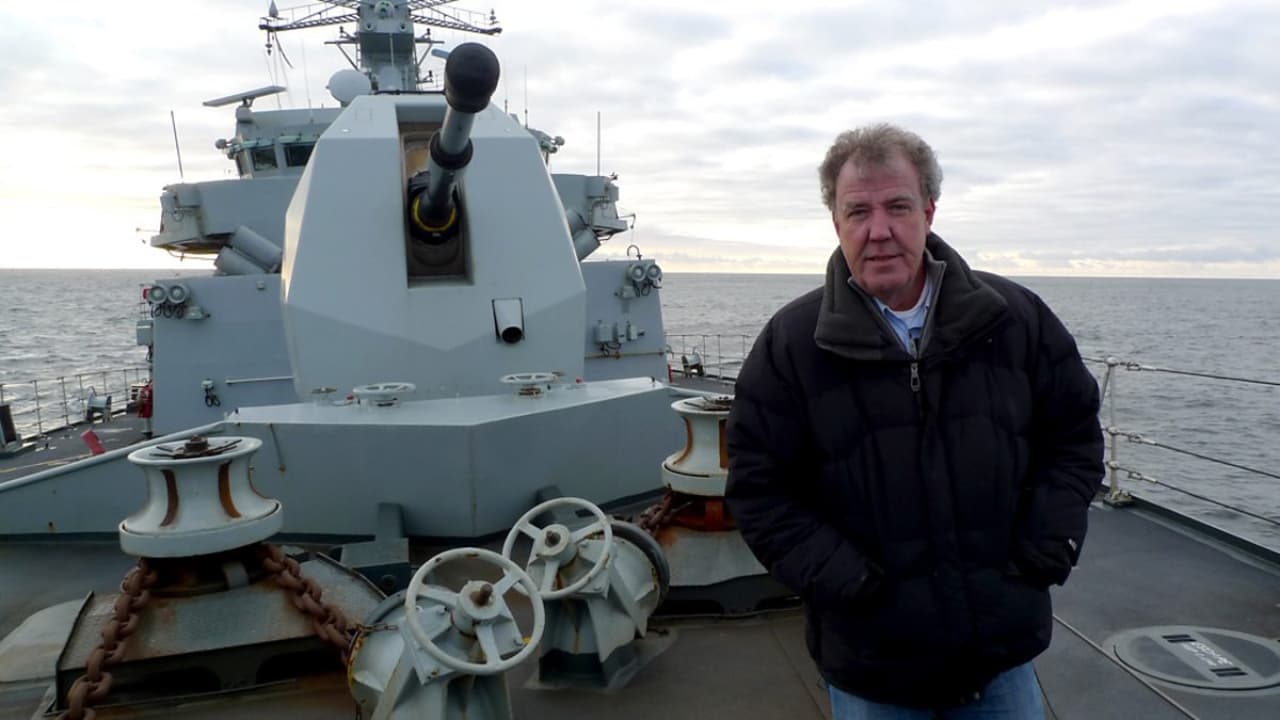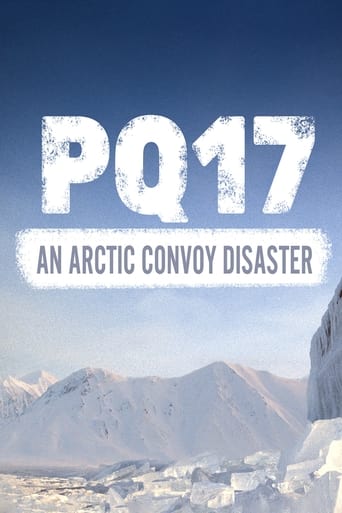



What a beautiful movie!
Intense, gripping, stylish and poignant
A lot of fun.
n my opinion it was a great movie with some interesting elements, even though having some plot holes and the ending probably was just too messy and crammed together, but still fun to watch and not your casual movie that is similar to all other ones.
View MoreThe story of PQ17, a convoy supplying Russia via the Arctic Ocean during WW2. On 27 June 1942 it set sail from Iceland with 35 merchant ships and a large escorting force. Due to indecisiveness and ineptness at the highest level, 24 of those merchant ships were sunk, a maritime disaster of monumental proportions.Narrated by Jeremy Clarkson, this is a very well researched and presented telling of a naval disaster and its causes. Includes interviews with survivors of the merchant ships plus crew on the escorting ships and historians.Clarkson does a good job at telling the story, though sometimes his way of telling it seems a bit populist, rather than factual. A minor issue though.Good use of locations to aid the audience's understanding and engagement, eg Clarkson travels on a ship in the Arctic to show how cold, dangerous and bleak it is.
View MoreBy 1942 the war wasn't going too well for the Allies. The USSR had been invaded by Hitler and needed supplies from the West desperately. The Germans were only fifteen miles from Moscow.Host Jeremy Clarkson brings us a globe that explains why the quickest way to get supplies from Britain and America was up into the arctic, around German-held territory, and into the Russian ports of Murmansk and Archangel.Then, using little models, he demonstrates the organization of the convoy system that, for the most part, "worked," as he says. In the center of the convoy would be several dozen aging freighters and tankers, slow and overloaded with supplies. In his book, "Monsarrat at Sea," Nicholas Monsarrat describes the old freighters beating against a head wind at the speed of a man walking. One doesn't have to imagine what easy targets these unarmed, rusty, and extremely important ships were for German bombers, torpedo planes, and U-boats because Clarkson makes it very clear.The convoys did have protection. Miles away, in a circle around them, were British and American warships designed to fend off attacks by enemy surface vessels. Closer around the convoy was a circle of destroyers and other escort vessels armed with anti-aircraft weapons and depth charges.Yet PQ17 left Iceland for Archangel and lost two thirds of its ships on the way. Clarkson pins the blame on one man in the Admiralty, suffering from a brain tumor that would kill him three months after the disaster.A rumor was circulating that the German battleship Tirpitz was leaving its shelter in Norway and heading for the convoy. The rumor was unsubstantiated by any evidence and contradicted by naval intelligence. But the Admiralty, realizing that none of the accompanying Allied ships could possibly win an engagement with the superb German battleship, withdrew the entire escort and ordered the convoy to scatter at once. They scattered, got lost, and were picked off by bombs and torpedoes. The Tirpitz, of course, remained in port.Host Clarkson takes us on a cruise through the same northern waters on a modern British warship. It's terrible. The seas are monstrous and the sea water rushing over the decks freezes and droops in stalactites from every fixture, immobilizing weapons and all other equipment. If enough of it accumulates, the ship becomes top heavy and capsizes.Clarkson retraces the route of a gallant little armed trawler leading three American ships through the pack ice of the northern passage to a large island called Nova Zemblya. The island is uninhabited. The reason it's uninhabited is that it's uninhabitable. You have never seen such a bleak, wintry landscape, with no vegetation and nothing to eat but however many sea birds you're able to catch. The Americans want to scuttle their ships but the British skipper of the trawler talks them out of it and the little group makes its way finally to port.There are talking heads of survivors, most of them now gone, and their stories are chilling. One British seaman managed to make his way from his torpedoed ship into a lifeboat. There were thirty-two men in the lifeboat with him. All but four died, within thirteen miles of land.It's a vivid, honest, and shocking story of a tragedy that should never have happened.
View MoreGreat documentary about an important event in WWII. Mr. Jeremy Clarkson does it again in a similar style as "Greatest Raid of All Time" and "Victoria Cross For Valour". Informative and entertaining at the same time while treating the topic with utmost respect to those that gave up their lives in a brutal and sad fashion associated with all war tragedies. Above all this documentary is fantastic story telling with a good blend of great interviews with the surviving members of PQ17. Their struggle and bravery has been ignored for too long and recognition is long overdue.Nice job and thank your for getting the story out into the mainstream. Looking forward to the next documentary by the same host.
View MoreI have just been riveted to the television for the last hour watching this fascinating story about World War 2 supply ship convoys on Arctic seas. This is the third in a series of excellently produced, deeply researched, and superbly written & presented (by Jeremy Clarkson) documentaries of heroic wartime events.In this film, as in the previous films, there are poignant contributions from veterans who were actually involved and Clarkson takes the viewer to the very locations to best deliver the story of this ill fated convoy. There are 3 still shots at the end of the film which are particularly moving.After seeing all three of these films it really brings home the staggering bravery, utter commitment and determination under the harshest environments, not to mention the actual warfare that these men endured for our liberty today. It's humbling indeed.
View More